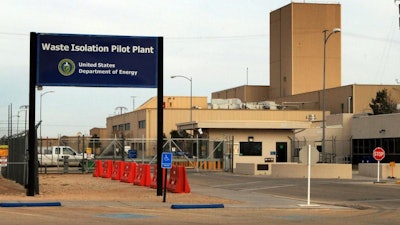
CARLSBAD, N.M. (AP) — The unique geology at the United States' only underground nuclear waste repository recently drew a researcher from across the Atlantic Ocean.
Scientist Maurizo Tomasi of Rome, Italy, journeyed to the Waste Isolation Pilot Plant in Carlsbad to conduct research last week due to the salt mines' low levels of background radiation, the Carlsbad Current Argus reports .
For six days per week, researchers used unbleached, damp paper towels to germinate seeds.
High-grade potash was used from a nearby mine to separate incubator-containing seeds, to minimize the effects of background radiation.
"It's not sophisticated," Tomasi said. "The sophistication is in the knowledge."
Germination rates were observed to be different when seeds were pulled from the vault, both between varieties and growing conditions.
George Basabilvazo, chief scientist at the U.S. Energy Department's Carlsbad field office, said the Waste Isolation Pilot Plant provides a unique arena for research experiments for scientists from around the globe.
"It is very satisfying to see WIPP be recognized as a national resource by the quality and variety of research and experiments that are conducted in the WIPP underground by world-class scientists and engineers from several universities and national laboratories," Basabilvazo said.
Tomasi was joined by New Mexico State University biology instructor Geoff Smith, who directs NMSU's multi-year Low Background Radiation Experiment.
Smith and Tomasi's work studied E. coli and soybean and wheat germination in the underground, where WIPP's protective salt layer offers a 79-fold reduction in ionizing radiation for experiments.
The project is further shielded by a pre-World War II-era, 23-ton (21-metric-ton) vault with a 1,000-pound (454-kilogram) door, a surplus from the Energy Department's Argonne National Laboratory.
Last month, a company based in southern New Mexico was awarded a contract to install a ventilation system at WIPP.
The ventilation overhaul was prompted by a radiation release in 2014 that contaminated portions of the repository and forced its closure for nearly three years.






















